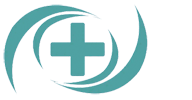Respiratory Conditions
Respiratory Conditions
Respiratory ailments refer to conditions or diseases which affect the lungs and airways, which can cause difficulties breathing, wheezing, coughing or chest tightness. A few of the most frequent respiratory ailments include asthma bronchitis, chronic obstructive lung disease (COPD) and Interstitial Lung Disease (ILD). These diseases can severely impact living quality, and can limit the ability to engage in every day tasks. Rehabilitation centers play a significant part in treating respiratory conditions through providing an extensive care and management. We will examine the different treatments for respiratory ailments within rehabilitation centres.
Overview of Respiratory Conditions
Conditions that affect the respiratory system impact millions of people across the globe and are caused by a variety of causes like smoking, pollution or genetic factors, as well as illnesses. The most frequent respiratory illnesses include chronic bronchitis, asthma and emphysema, as well as pulmonary fibrosis as well as lung cancer. These conditions are usually classified into restrictive and obstructive disorders. Obstructive lung diseases occur in the event of inflammation, which causes narrowing and irritation to airways, resulting in breathing difficulties. However the condition of restrictive lung disease is defined by decreased the lung’s capacity as well as chest size, which results in decreased oxygen and airflow.
Diagnosis and Assessment
The process of diagnosing respiratory problems involves an exhaustive medical assessment which includes medical history, physical examination and tests for diagnosis. The examination may include tests for pulmonary function, chest X-rays CT scans, or blood tests. The process of diagnosis assists healthcare professionals assess the seriousness of the problem and formulate a personalised treatment strategy. The examination could also involve finding the cause of the problem, for example smoking, exposure to work, or allergies.
Medications
Commonly, medications are employed for the treatment of respiratory disorders to treat the inflammation that causes it to improve breathing and avoid exacerbations. The most popular medications comprise bronchodilators, corticosteroids and anti-inflammatory drugs. Bronchodilators like Ventolin help to relax the muscles surrounding the airways. Corticosteroids decrease inflammation in the lung. If you’ve received a medical diagnosis for a respiratory issue and your physician has prescribed Ventolin, you can purchase Ventolin through the internet or the local pharmacy. Anti-inflammatory agents like leukotriene-based modifiers reduce inflammation of airways and immunomodulators like Xolair specifically target certain kinds of immune cells to lessen inflammation of the airways. They are typically administered via inhalers or nebulizers to provide immediate relief.
Respiratory Therapy
Respiratory therapy is an essential part of respiratory therapies in rehabilitation facilities. Respiratory therapists collaborate with other healthcare professionals to design a comprehensive treatment plan that incorporates breath exercises, chest physiotherapy along with oxygen therapy. Breathing exercises like diaphragmatic breathing and pursed lips breathing aid in improving lung function and decrease breathing shortness. Chest physiotherapy includes a variety of methods including percussion, vibrato and postural drainage that help clear mucus out of the airways. Oxygen therapy is given to patients suffering from serious respiratory issues to boost oxygenation and lessen the strain for the heart.
Pulmonary Rehabilitation
Pulmonary rehabilitation is a research-based program that is designed to assist patients who suffer from respiratory ailments improve their functional ability and overall quality of living. The typical program involves exercise training, educational as well as psychosocial assistance. The exercise portion is the development of a specific program of strength and aerobic exercises that aim to improve the function of the lung and overall fitness. Education is the process of the patient with information about their medical condition, medications as well as breathing techniques and changes to their lifestyle. Psychosocial assistance gives patients emotional support and strategies for coping with their illness.
Surgery
In certain instances it is possible to have surgery to treat respiratory issues. The most frequently performed surgical procedures are the reduction of lung volume, as well as lung transplantation. Surgery to reduce the volume of lung entails the removal of damaged or damaged lung tissue to enhance lung function and decrease breathing shortness. Lung transplantation is the process of taking the affected lung and replacing it with a healthier lung taken from an organ donor. These procedures are generally reserved for those suffering from chronic respiratory issues who haven’t had a response to other treatments.
Management and care for the whole family
The effects of respiratory conditions can be significant on your quality of life and hinder the ability to carry out everyday activities. Rehabilitation centers play an important part in treating respiratory conditions by offering comprehensive care and treatment. The options available to treat respiratory ailments include medicines and respiratory therapy, as well as pulmonary rehabilitation, and surgical. A customized treatment plan that incorporates a variety of elements is crucial to treat respiratory issues efficiently. An early diagnosis, timely treatment and lifestyle changes are able to alleviate symptoms and reduce the risk of complications.
